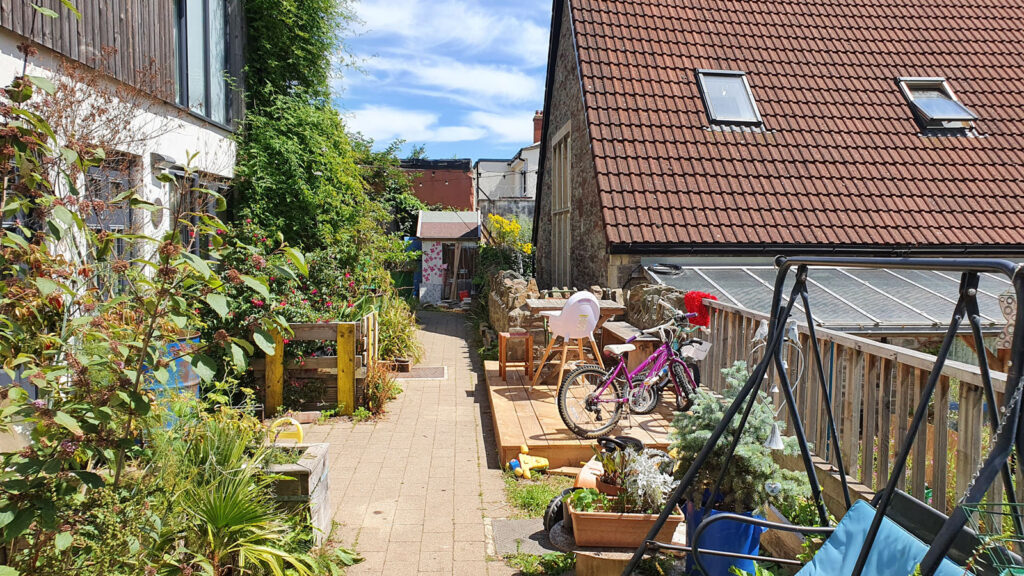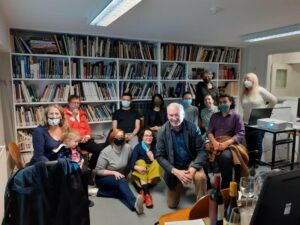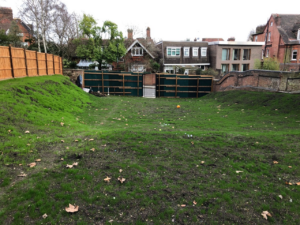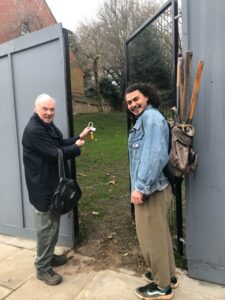We had a little time to see Brutopia cohousing in Brussels.
It’s something of a rarity – unlike other northern European countries, Belgium doesn’t have many community led housing schemes, despite having a lot of self-build.
Brutopia started when one of the members emailed his address book inviting anyone interested to discuss the idea of cohousing. 45 people turned up to the first meeting. There were 15 people at the second meeting, and a clear group began to emerge.
They split the city into segments and cycled around to find sites. This site was used a storage for trucks and was one of the first they found. The owner did not see significant value in the site, and by chance his father had been interested in cohousing, so he was prepared to agree a reasonable land value and deferred payment to start on site to facilitate the project.
We met one of the original members, architect Serge Fraas. He lives in the community with his family and his office designed the scheme. He recalls the planning authorities were not sure what to make of their proposals and took a lot of persuasion around some unconventional approaches for Brussels, such as the density and car-free aspects of the scheme. However it features commercial, charitable and community uses on the ground floors, with 29 flats above. As far as we could understand, some of these were consciously sold at a discount, although there were no on-site affordable housing requirements at the time. The group formed a corporate entity to borrow development finance from Triodos, who were interested in understanding the financial situations of all members and sought individual deposits at start on site. The flats switched to individual condominium (commonhold) ownership at completion, with individual mortgages.
Each flat has its own private outdoor space in the form of a large balcony, but there is a sense of community in the shared courtyard garden with slides and trampolines, and a couple of pet rabbits hopping about! The roof terrace is a communal space only for adults to enjoy quiet time. There is also a common room on the ground floor for larger events and meetings, and a shared laundry room.
For some more images see Stekke+Fraas and Dezeen.
Stekke+Fraas also designed a scheme for Brussels CLT, and we can see lots of similarities with the UK.
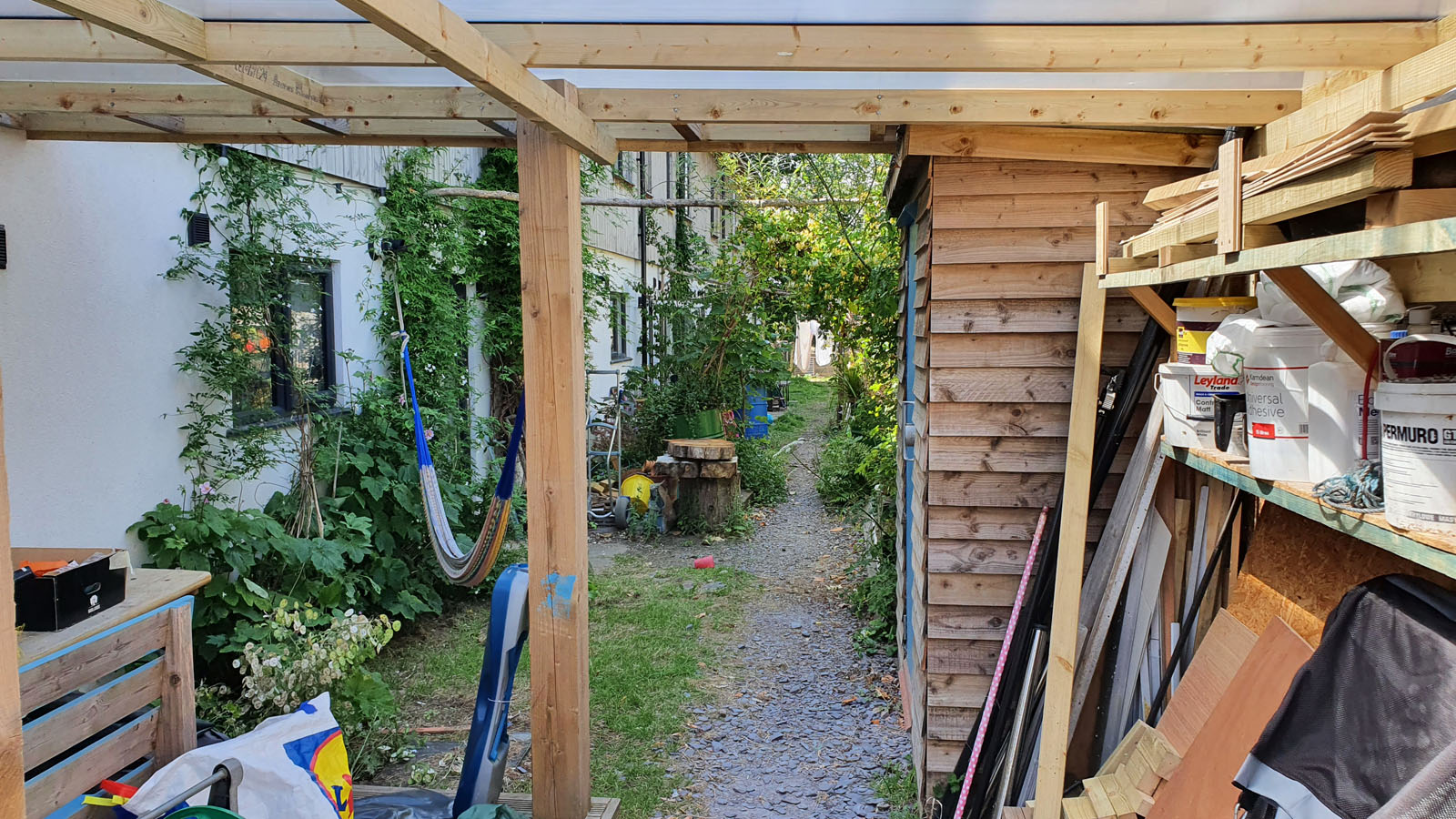 There was no ‘common house’ or ‘intentional community’, but this looked and felt like intergenerational cohousing. The shady rear gardens also lacked fences. An informal path ran across and linked back doors where fences would have been. Individual and common spaces were blurred throughout the scheme, and reinforced our theory that
There was no ‘common house’ or ‘intentional community’, but this looked and felt like intergenerational cohousing. The shady rear gardens also lacked fences. An informal path ran across and linked back doors where fences would have been. Individual and common spaces were blurred throughout the scheme, and reinforced our theory that 